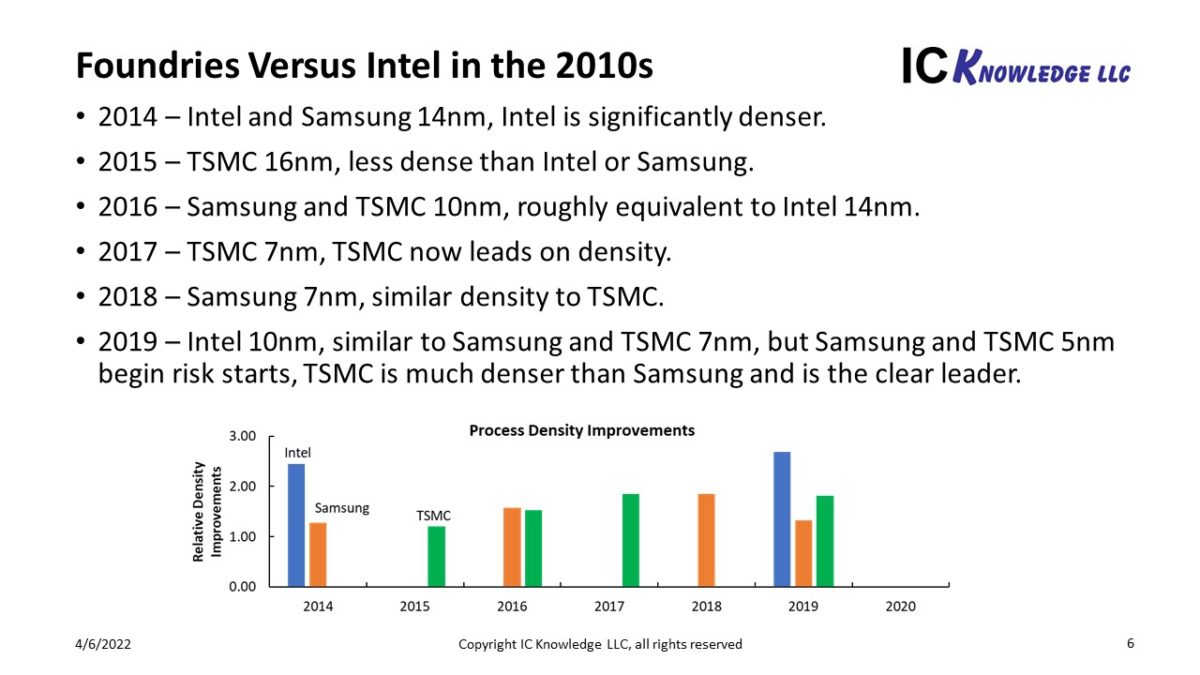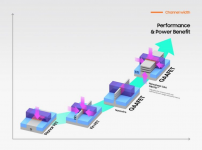This is the translated Korean version of the article
https://www.thelec.kr/news/articleView.html?idxno=17300 which has some info. that is left out in the English version.
Note: "It is observed that the timing of mass production using the actual 3nm process may need to be watched a little longer. Some say that the time for full-scale mass production of GAA 3nm by Samsung Electronics will be the end of this year at the earliest or the first half of next year at the latest."
Samsung Electronics begins 'trial production' of 3-nano foundry... The first customer is a Chinese ASIC company
- By Jang Kyung-yoon
- Approval 2022.06.28 09:10
Industry's first 3-nano process applied with GAA process... Started trial production The first customer secured some reserve quantities from Qualcomm, a US semiconductor company for bitcoin mining in China .
Samsung Electronics will start 'trial production' of the 3-nm (nm) foundry process as early as this week. The first customer is said to be a Chinese bitcoin mining semiconductor company. It is reported that Qualcomm of the United States has also received a 'reserve' (reservation) that it can produce some quantities on consignment. It is not 'mass production' in the general sense, but the industry's evaluation is that it is meaningful in that it is the world's first 3-nm trial production using the GAA (gate-all-around) process.
According to the semiconductor industry on the 28th, Samsung Electronics plans to start trial production of 3nm products using the GAA process as early as this week.
GAA is a next-generation transistor structure that utilizes four sides, unlike the existing finFET structure that uses three sides of a channel through which current flows. Compared to the FinFET structure, it has more precise current control capability and high power efficiency, so it is considered an essential technology to realize ultra-fine semiconductor line width.
The first customer of the 3nm GAA process is known as PanSemi, a fabless chip for Bitcoin mining (ASIC) in China. It is known that the company has reached an agreement with Qualcomm, the largest customer of Samsung Foundry, that it can entrust the production of chips using the 3-nm process at any time.
This is interpreted as a strategy to secure Samsung Electronics' 3nm process margin in advance in case a problem arises in the 3nm process of TSMC, a Taiwanese foundry company. Previously, Qualcomm tried to produce a mobile AP (application processor) using Samsung Electronics' 3nm process, but Samsung Electronics failed to meet the yield conditions and thus entrusted the supply to TSMC.
Samsung Electronics has set the goal of mass-producing the world's first 3-nano GAA process in the first half of this year. This position was reconfirmed in a conference call after the announcement of the first quarter results. With this trial production, Samsung Electronics' promise of '3nm mass production in the first half' is expected to be kept. However, it is known that this production is close to trial production, which is made by testing the product, rather than mass production in the general sense.
The industry believes that the fact that Samsung Electronics is actually producing the world's first GAA 3nm process is significant. Samsung Electronics has been pointed out that the 3nm process development is not smooth due to the lack of IP (intellectual property) related to the 3nm process and sluggish yield. Recently, there has also been an observation that the 3nm process mass production schedule has been postponed. Samsung Electronics countered this, saying, "The 3-nano mass production schedule is proceeding as scheduled without any setbacks, and mass production will begin in the first half of the year."
An industry official said, "Even at the trial production stage, it can be very helpful for Samsung Electronics to secure customers by increasing the technology and yield of the 3nm GAA process." It still appears to be unclear." It is observed that the timing of mass production using the actual 3nm process may need to be watched a little longer. Some say that the time for full-scale mass production of GAA 3nm by Samsung Electronics will be the end of this year at the earliest or the first half of next year at the latest.
Meanwhile, TSMC is preparing for mass production of 3nm process (N3) based on FinFlex. Finflex is a technology that provides the existing FinFET structure customized according to various options desired by chip designers. For example, based on the 3N process, 3-2 FIN with the highest frequency, 2-2 FIN with a balance between performance and efficiency, and 1-2 FIN with emphasis on power efficiency can be mixed and used in the same die. The basic N3 process will be mass-produced from the second half of this year, and the improved process will be mass-produced after that.
At the beginning of this year, TSMC also raised a problem that the 3nm process yield was lower than expected, but like Samsung Electronics, it emphasized that there is no setback in the plan. TSMC Chairman Mark Liu said at a shareholder briefing held on the 6th of this month, "We will start mass production of the 3N process in the second half of this year, and the improved process will begin mass production one year after that."




